OpenAI Function Calling Slides and Tutorial

SLIDE1 |
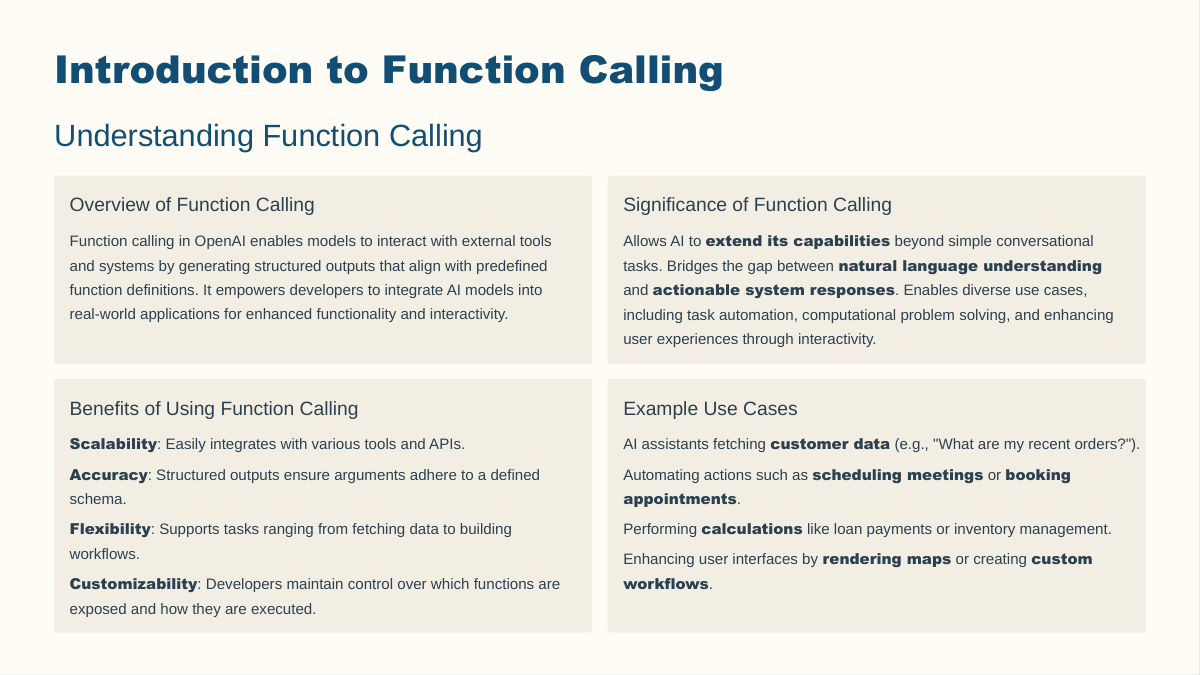
SLIDE2 |
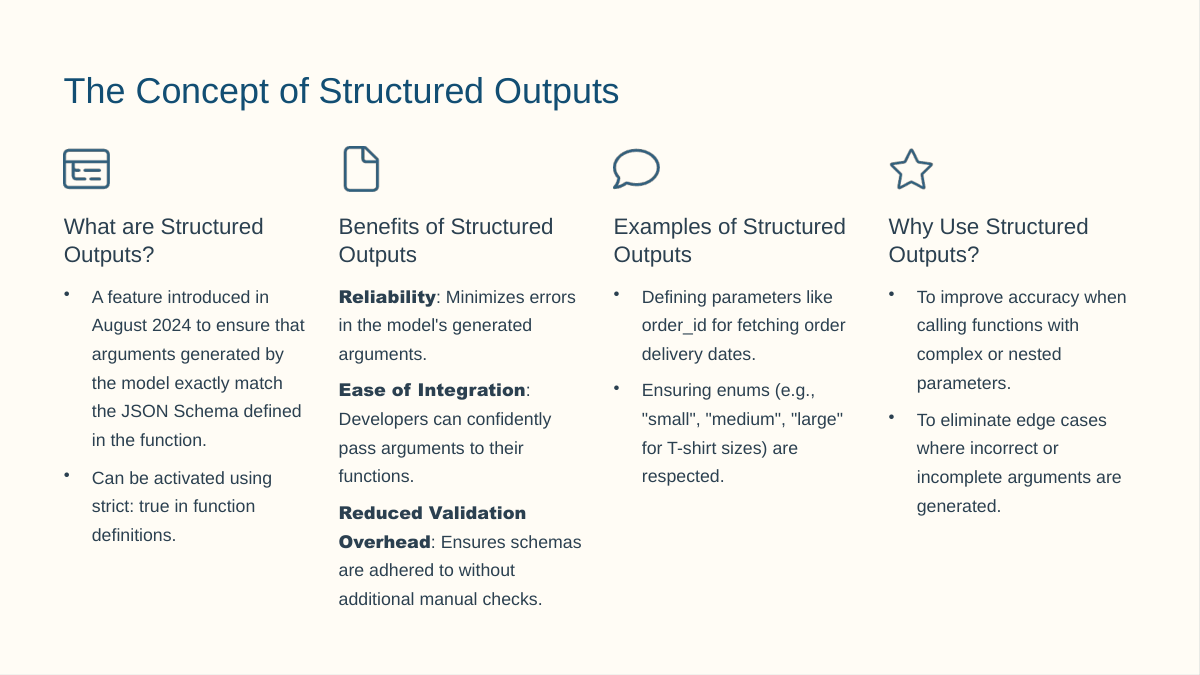
SLIDE3 |

SLIDE4 |

SLIDE5 |

SLIDE6 |

SLIDE7 |
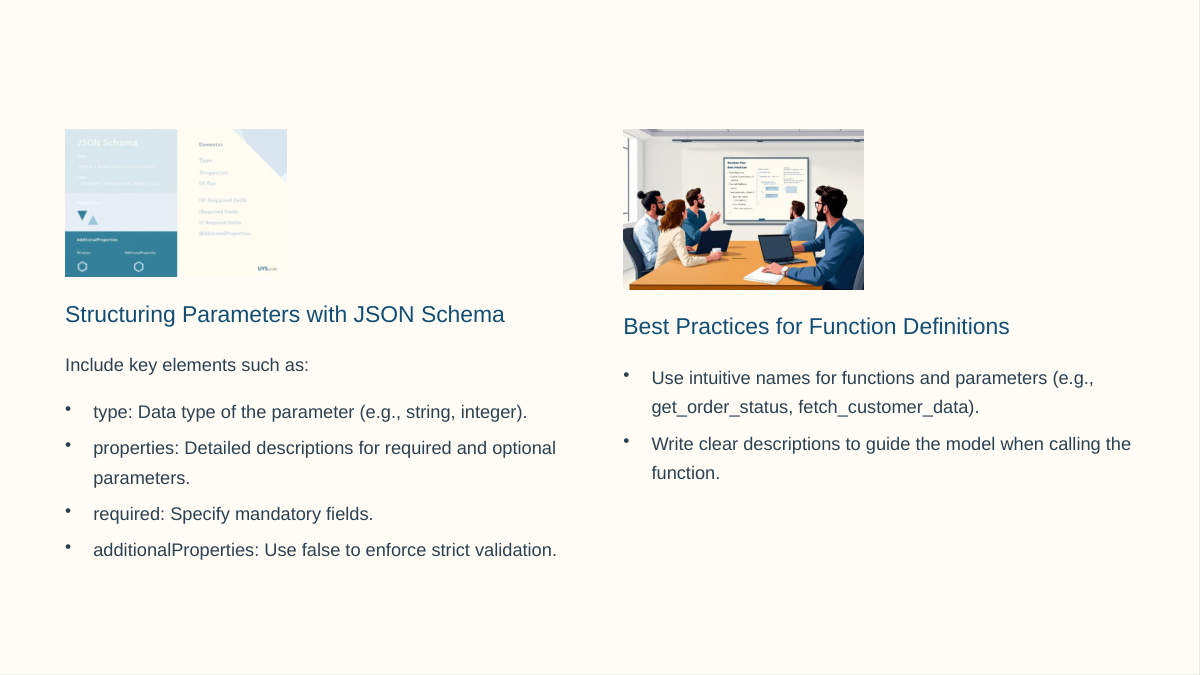
SLIDE8 |
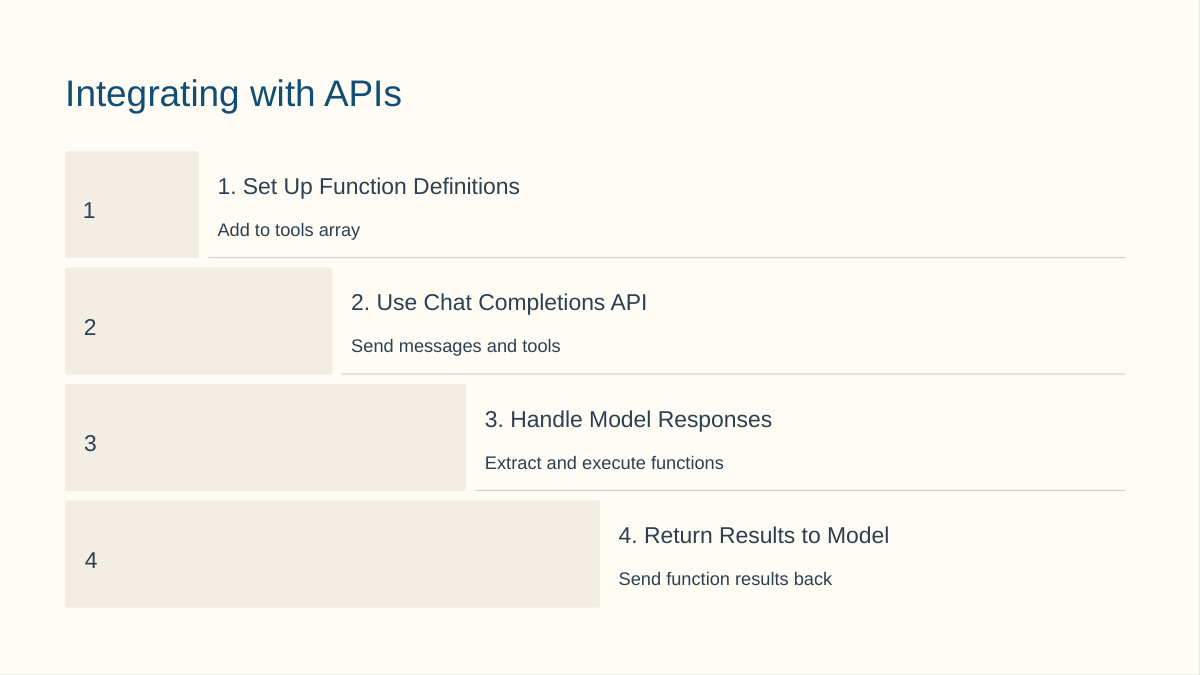
SLIDE9 |
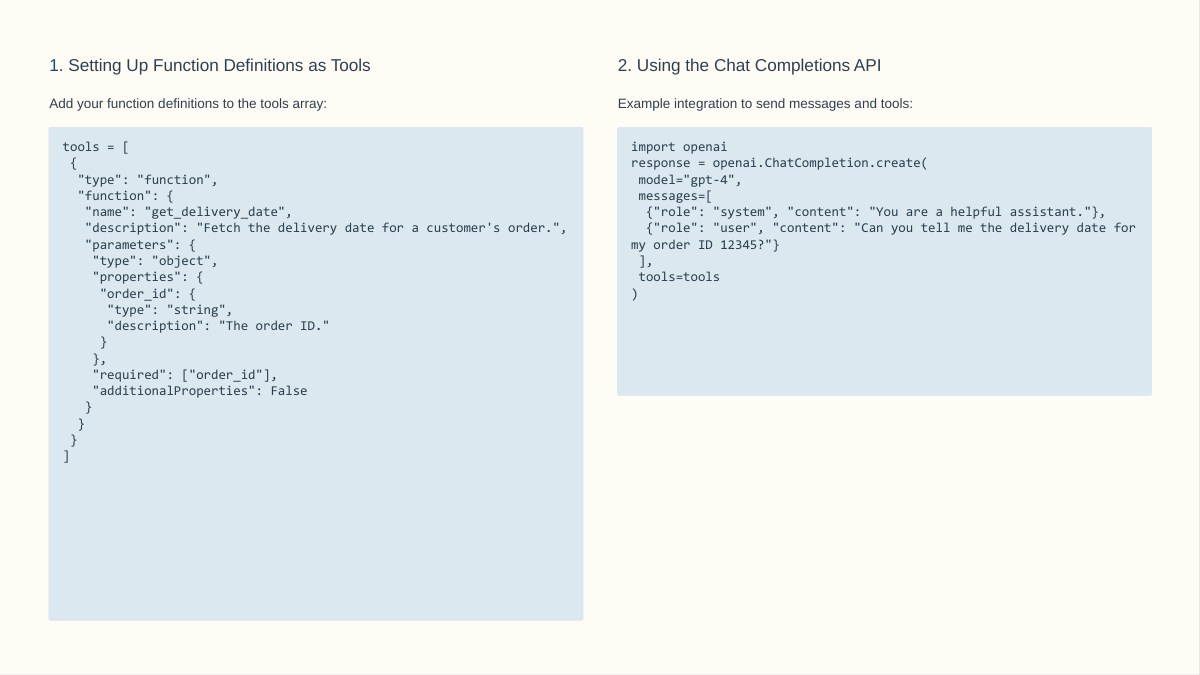
SLIDE10 |

SLIDE11 |
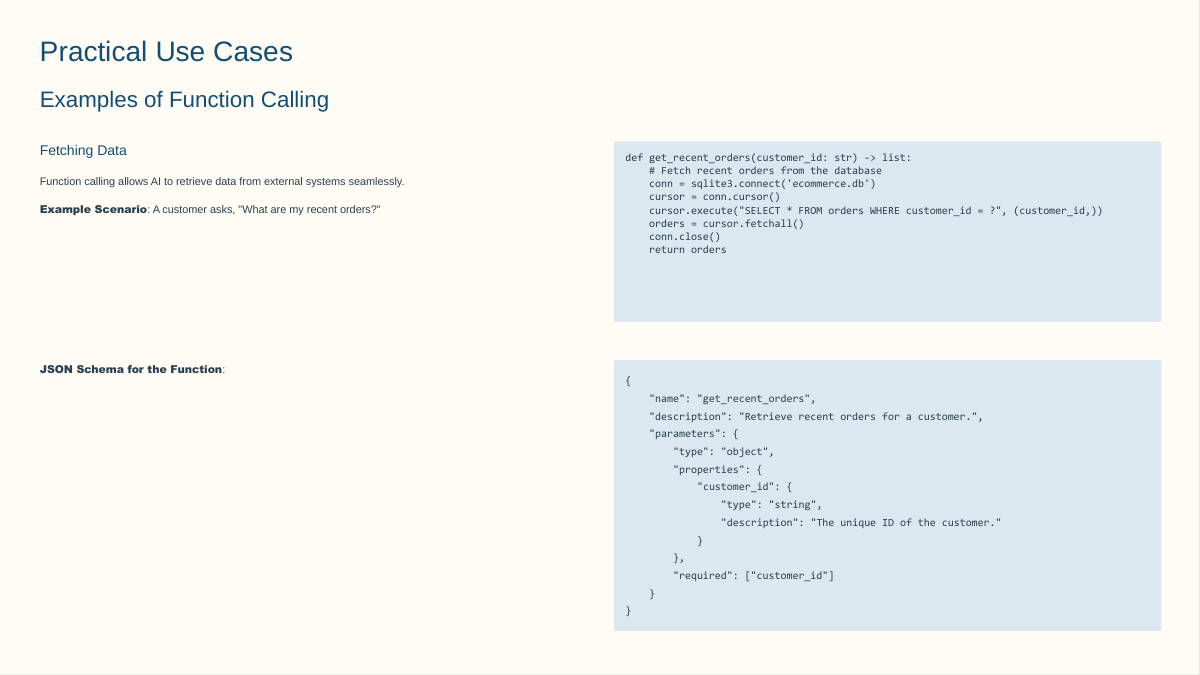
SLIDE12 |
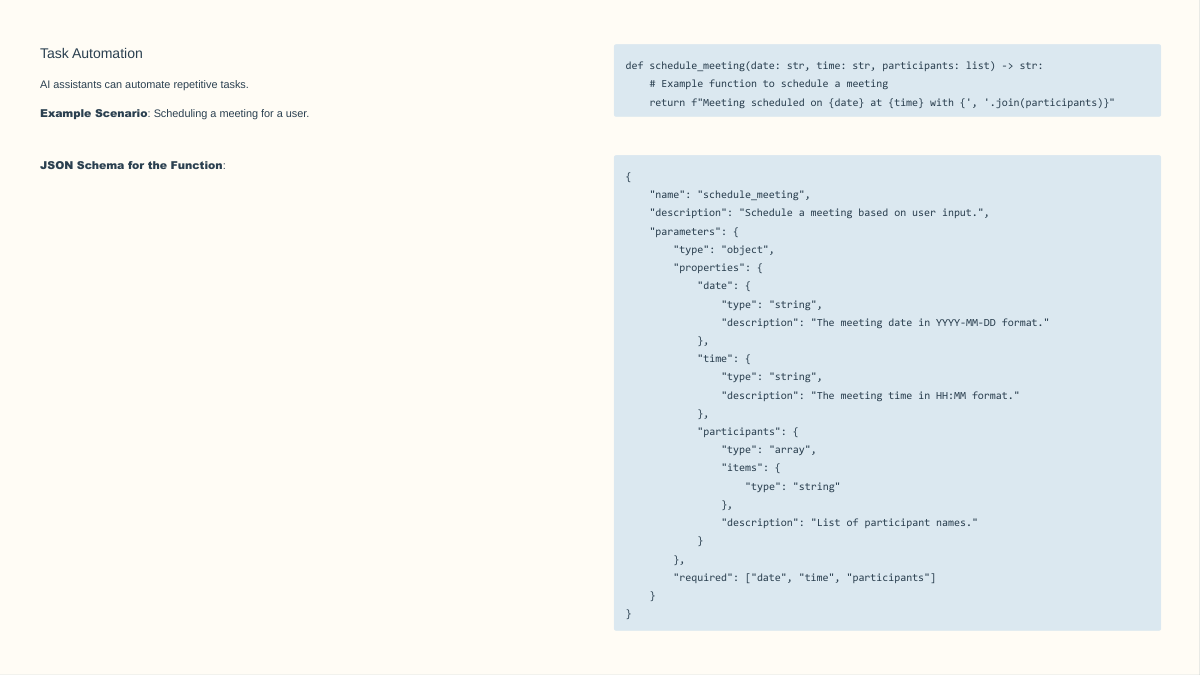
SLIDE13 |
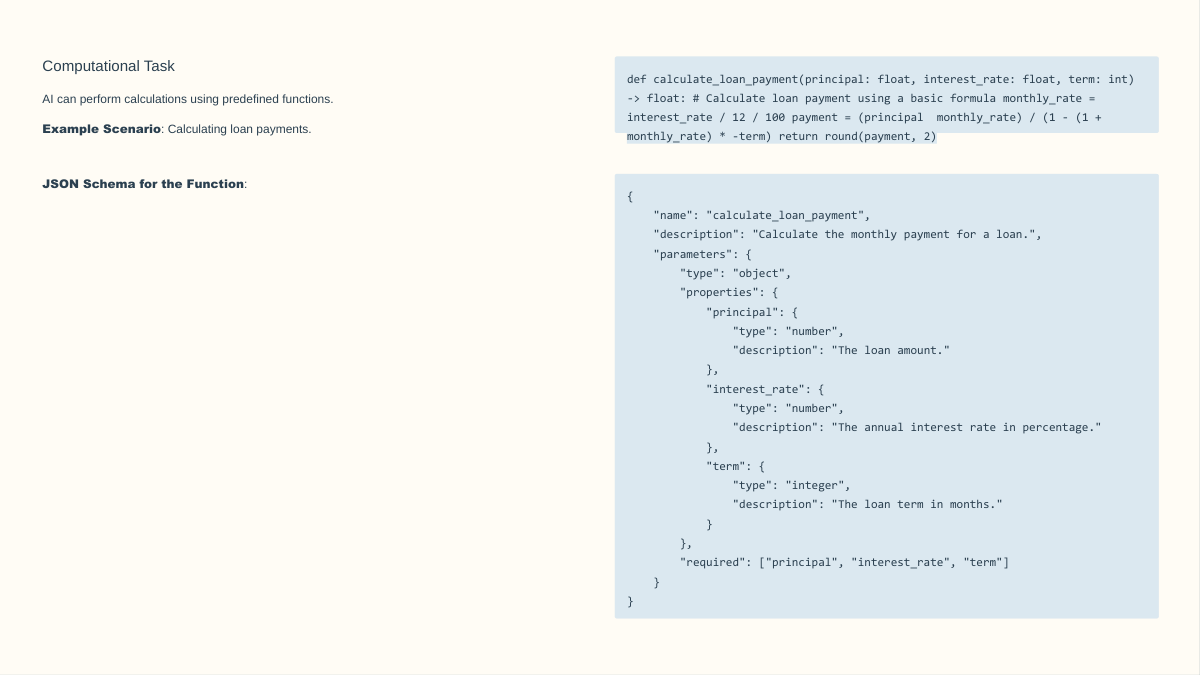
SLIDE14 |

SLIDE15 |
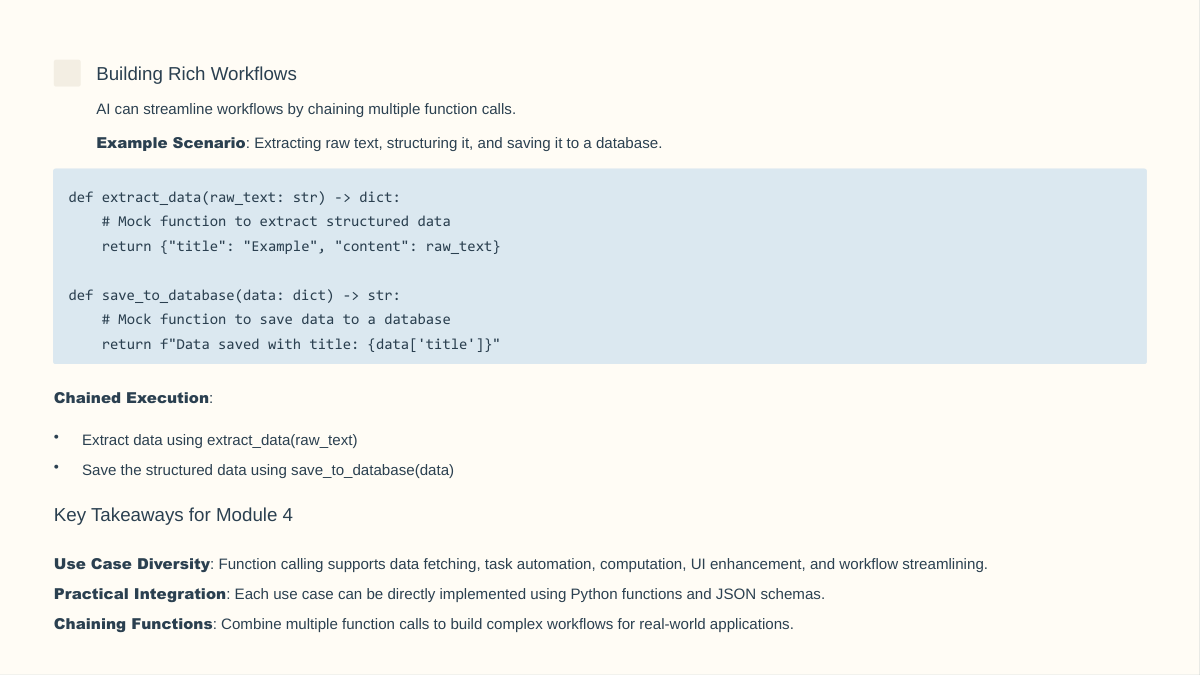
SLIDE16 |

SLIDE17 |
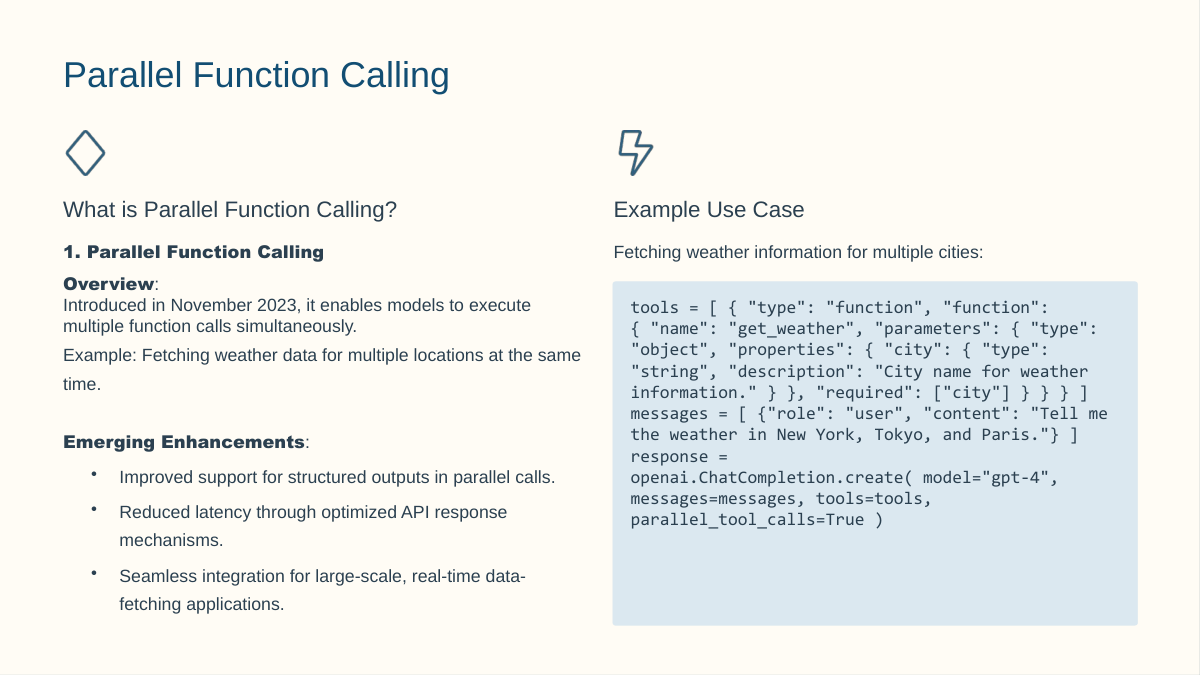
SLIDE18 |

SLIDE19 |

SLIDE20 |
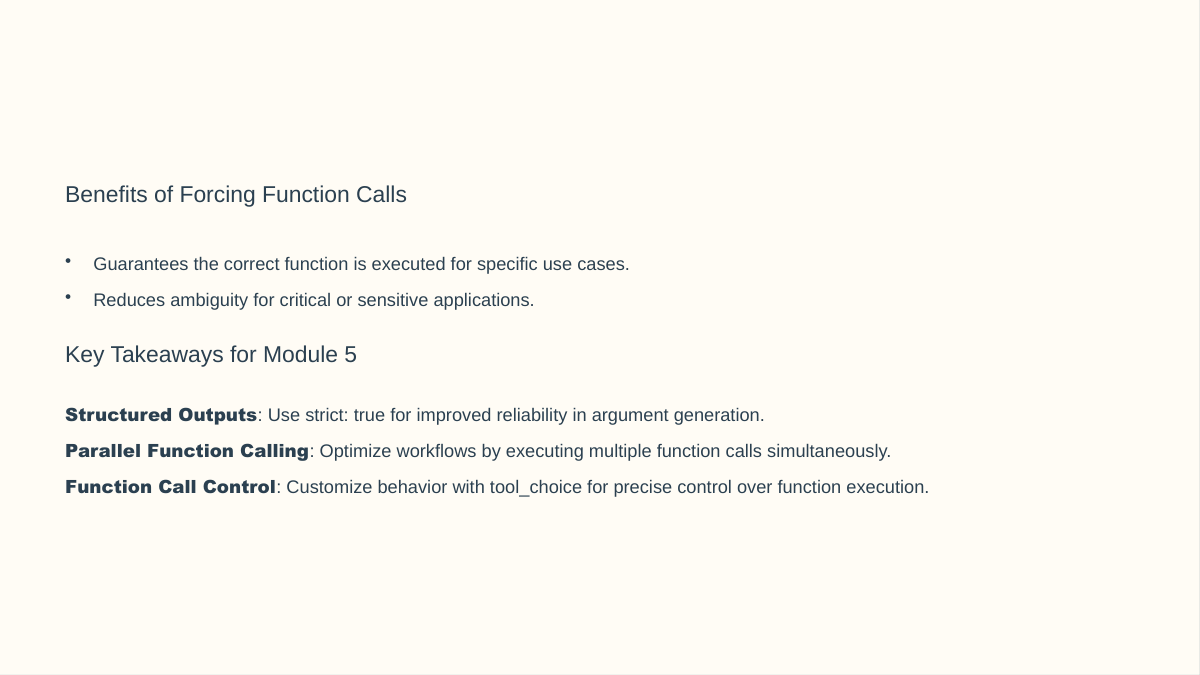
SLIDE21 |
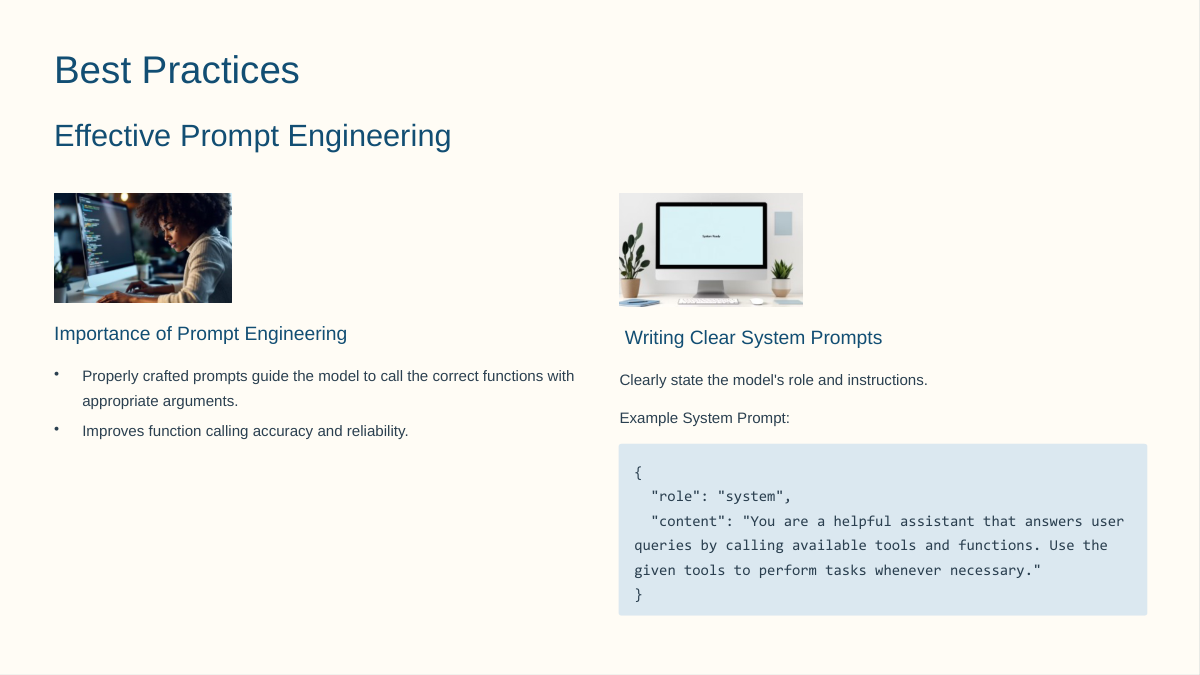
SLIDE22 |
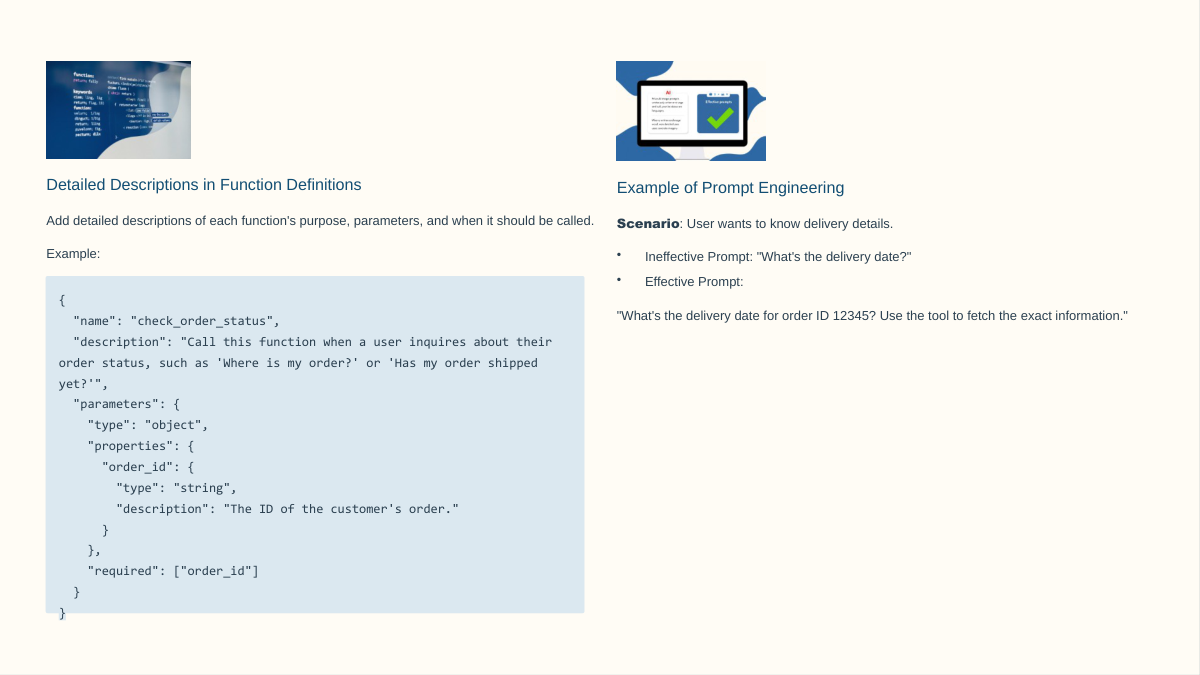
SLIDE23 |

SLIDE24 |
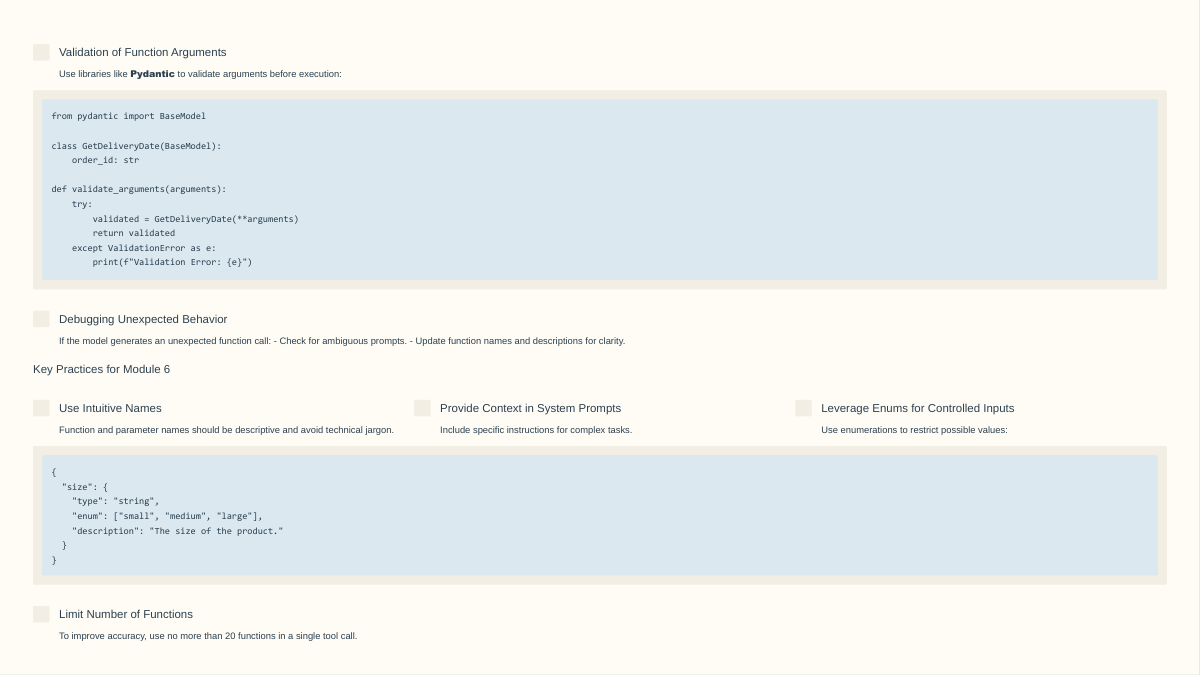
SLIDE25 |
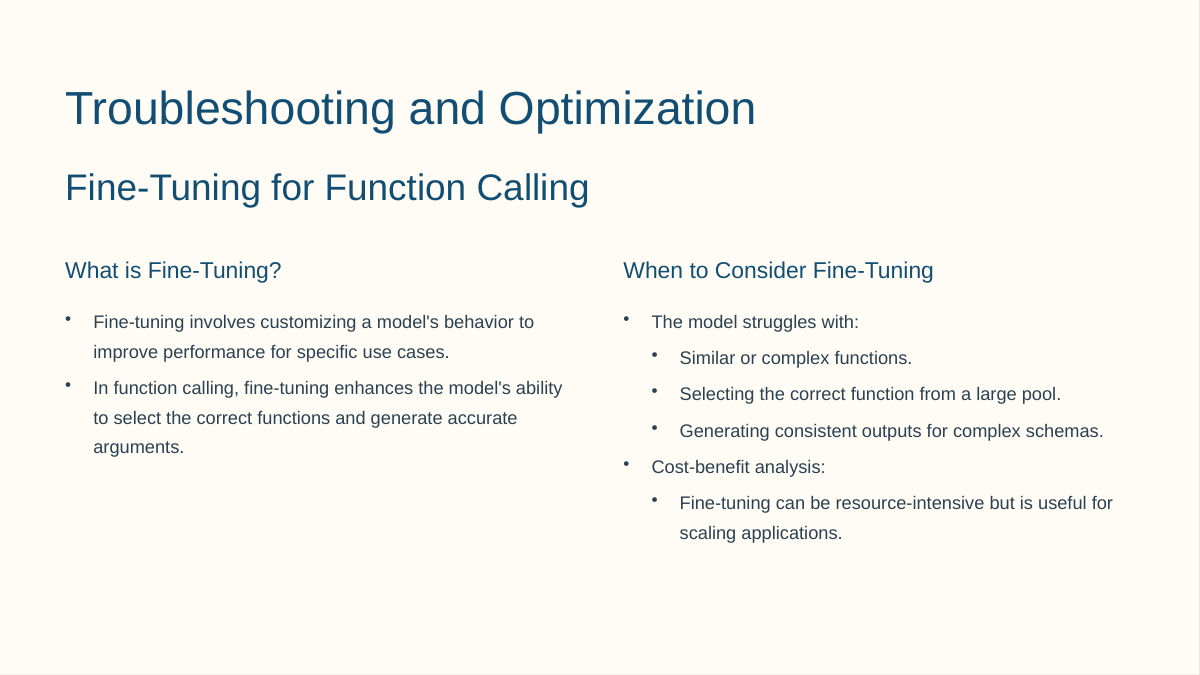
SLIDE26 |

SLIDE27 |
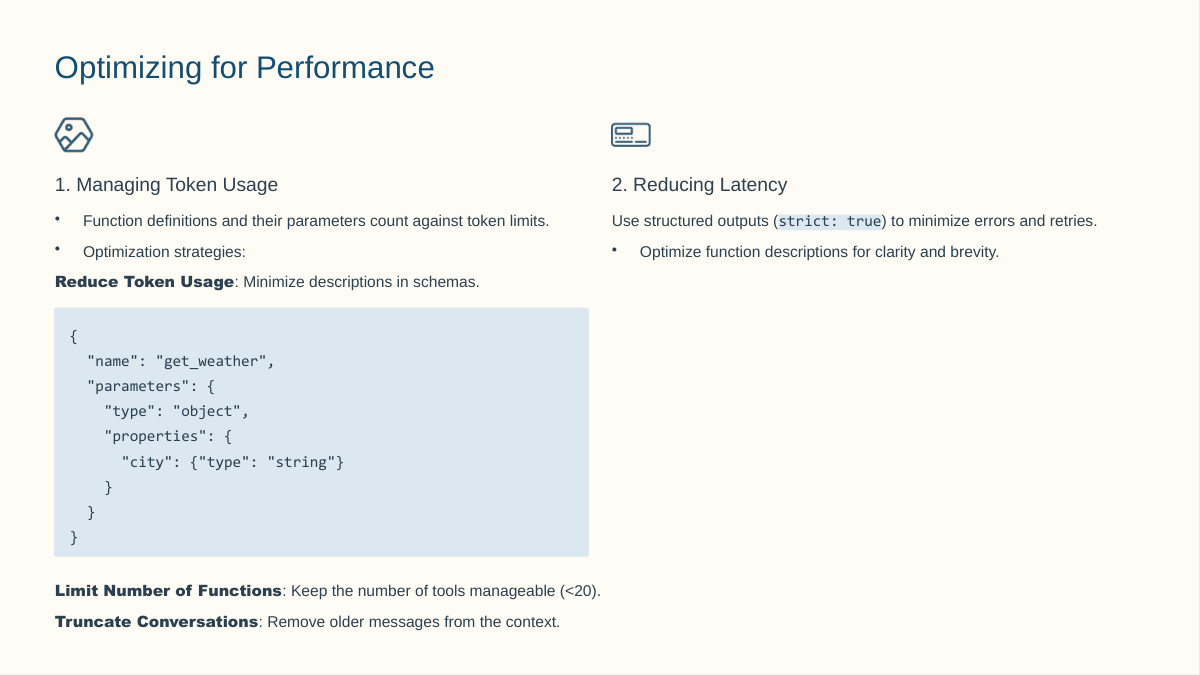
SLIDE28 |
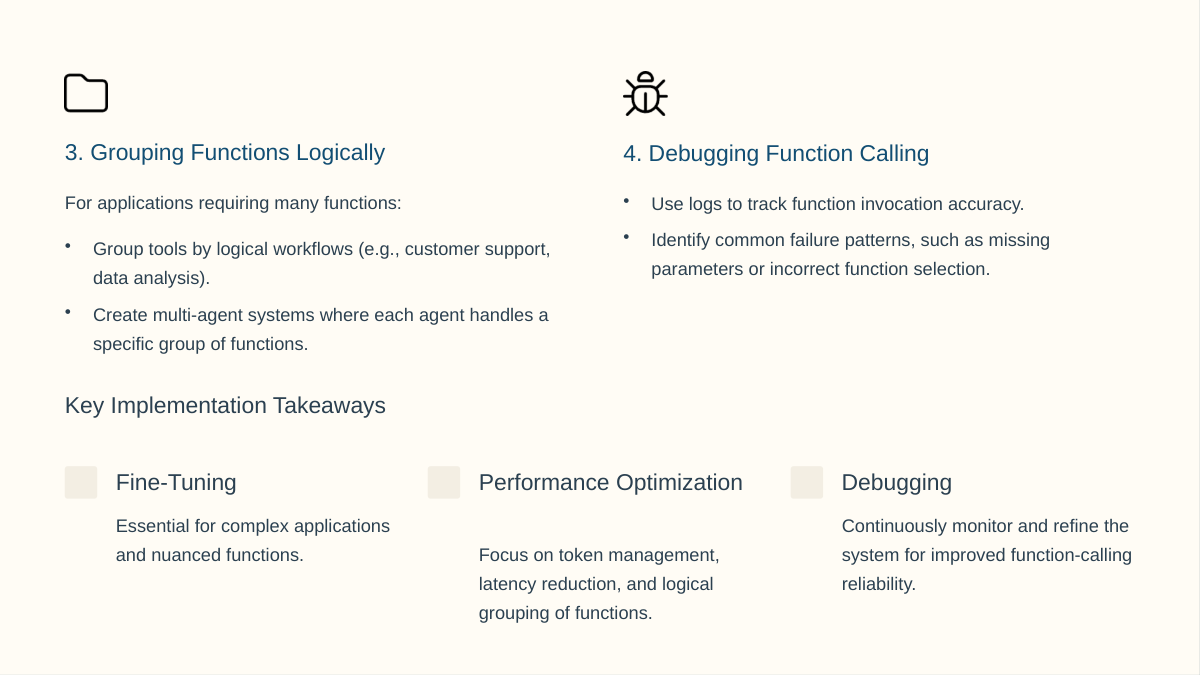
SLIDE29 |
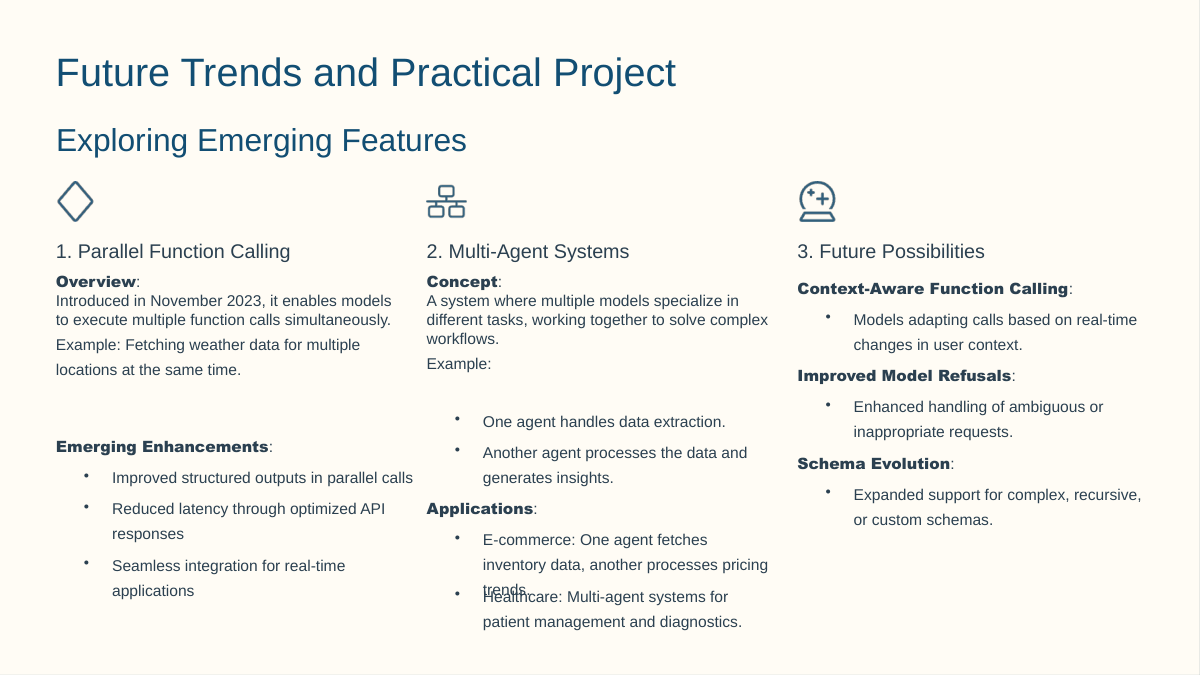
SLIDE30 |
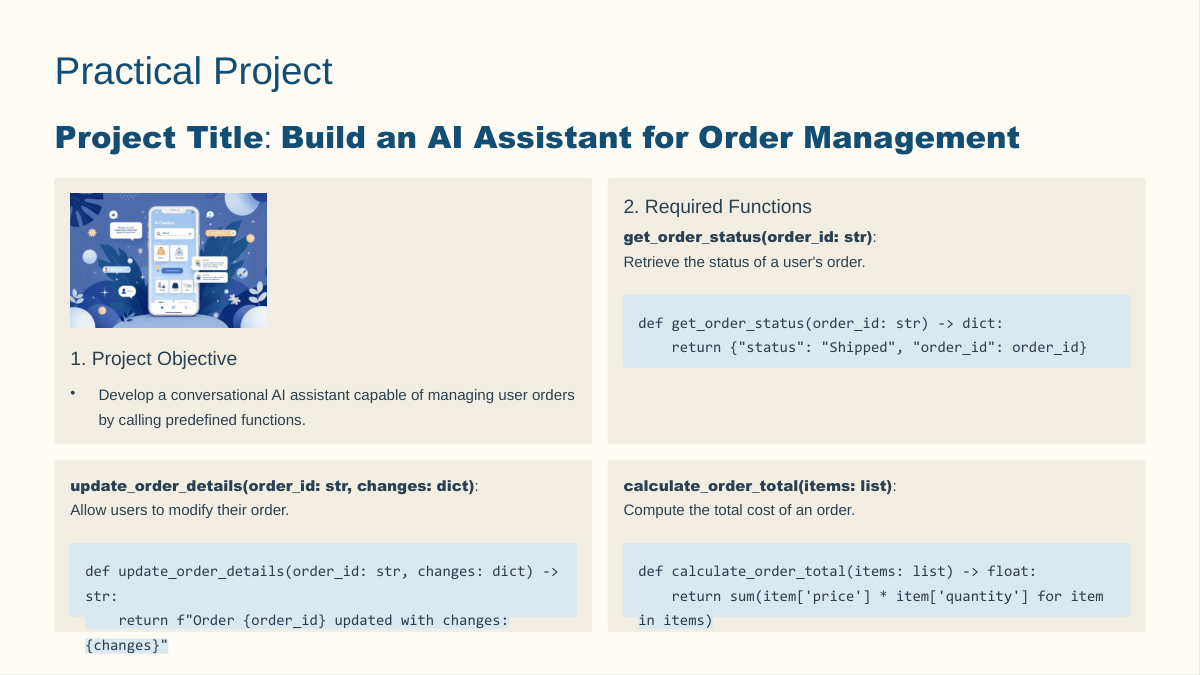
SLIDE31 |
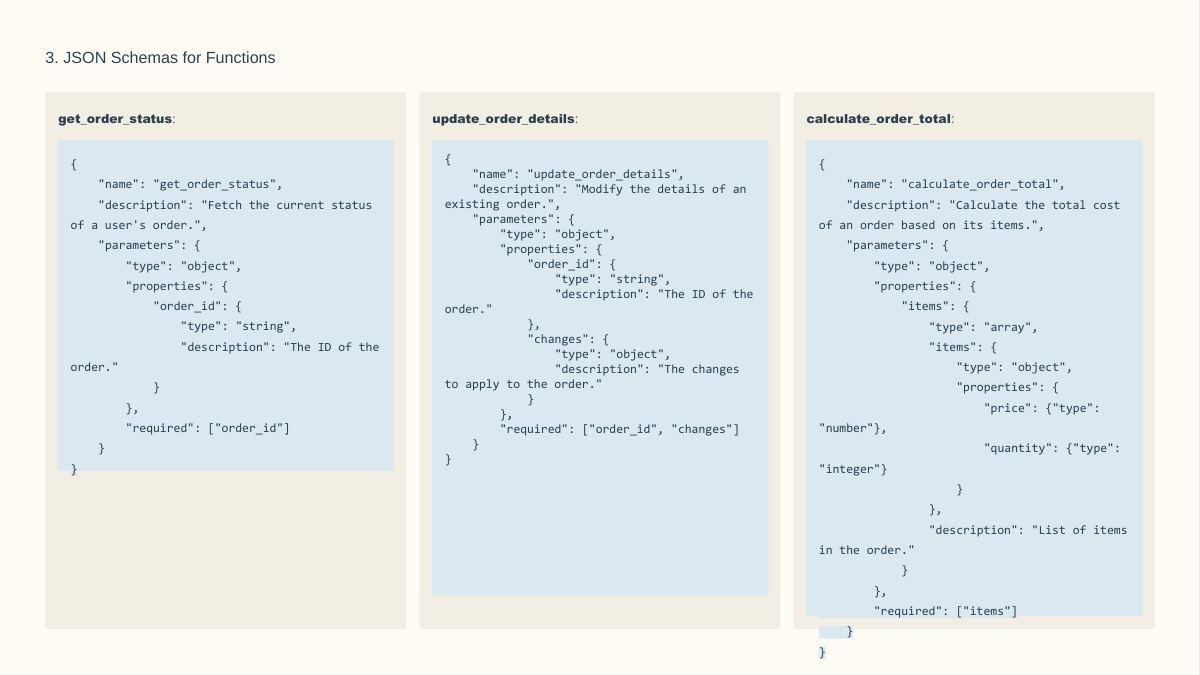
SLIDE32 |
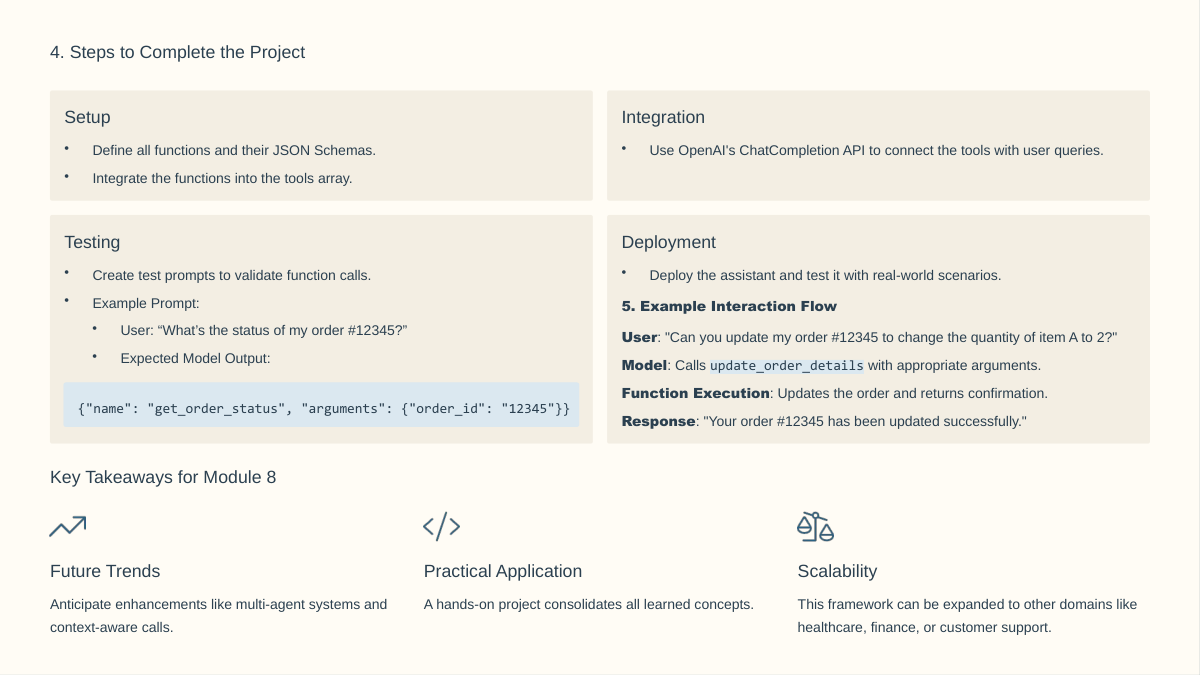
SLIDE33 |
|
Here's a detailed article and course material based on the provided slides. This material is structured into modules, reflecting the content of the slides. OpenAI Function Calling: Comprehensive Course MaterialCourse OverviewThis course provides a step-by-step guide to understanding and implementing function calling with OpenAI's tools. It covers fundamental concepts, practical applications, advanced features, and troubleshooting techniques to integrate AI models into real-world applications effectively. Module 1: Introduction to Function CallingUnderstanding Function CallingFunction calling in OpenAI allows models to interact with external systems using structured outputs. This capability enhances the interactivity and functionality of AI-powered applications. Significance:
Benefits:
Use Cases:
Module 2: Fundamentals of Function CallingKey Features:
Lifecycle of a Function Call:
Module 3: Implementing Function CallingSteps to Create Function Definitions:
Example:
Integration with APIs:
Module 4: Practical Use Cases
Module 5: Advanced FeaturesStructured Outputs:
Parallel Function Calling:
Function Call Control:
Module 6: Best Practices
Module 7: Troubleshooting and OptimizationFine-Tuning:
Performance Enhancements:
Module 8: Future Trends and Practical ProjectEmerging Features:
Practical Project: Build an AI Assistant for Order Management
Example Interaction:
This course material combines theoretical understanding with hands-on practice, making it ideal for developers aiming to integrate OpenAI’s function-calling capabilities into applications effectively. |
Gpt-41-models